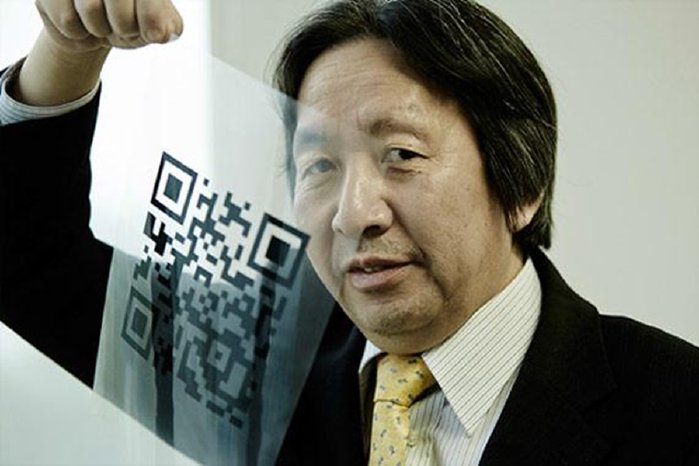However, with increasing use, the limitations of the barcode became evident: it could only contain 20 alphanumeric characters and therefore held too little information. At DENSO WAVE INCORPORATED (at that time part of the DENSO CORPORATION), these limitations of the barcode became particularly clear in the area of manufacturing and production. Masahiro Hara was involved in the development of barcode scanners in 1992. After many attempts, the QR Code was developed in 1994. Information on DENSO WAVE, mobile computers, Auto-ID solutions, handhelds, scanners, and various models of the QR Code can be found at https://www.denso-wave.eu/.
Unique benefits of the QR Code
Although 2D codes already existed before the QR Code was developed, its great advantage is that it is better suited for practical use. QR Codes are more resistant to dirt and damage, and they are faster and easier to read. In addition to its use in the automotive industry, the QR Code has made other sectors, such as food and pharmaceutical companies, increasingly efficient. The QR Code became an indispensable companion due to its enormous storage capacity. Another factor that contributed to the spread of the QR Code was the decision by DENSO WAVE, part of the Toyota Group, to make the specifications of this particular 2D code publicly available.
Additional models for a wider range of applications
Because the QR Code is therefore an open code that anyone can use, it has spread worldwide. In 1997, the QR Code was approved as an AIM standard for use in the automatic identification industry. This was followed in 2000 by recognition by the International Organization for Standardization (ISO) as one of its international standards. The experts at DENSO, part of the Toyota Group, gradually developed additional models of the QR Code.
To meet the demand for smaller codes, the Micro QR Code was developed, which can be printed on smaller surfaces. Another QR Code model was the iQR Code in 2008. The special feature: An iQR Code can store a larger amount of information than a classic QR Code. For comparison: an iQR Code of the same size can contain 80 percent more information. If the same amount of information is to be stored, an iQR Code can be reduced in size by 30 percent. To be more precise, an iQR Code can store up to 40,000 characters of information. The rectangular rMQR Code replaced the iQR Code in 2022 as the latest new version. It combines the advantages of the QR Code with the practical size of a classic barcode. This ensures legibility, especially on cylindrical products such as cables.
From specialist areas to everyday use
Although the QR Code offers numerous possibilities and the extended models could also be used in an industrial context, acceptance and widespread use in the general public only followed later. However, the application of QR Codes has also been criticized. For example, uncertainty regarding data security plays a relevant role when considering the advantages of QR Codes. But DENSO also has solutions for this, too. The data experts have created innovations that meet the challenges of current developments.
For example, there is the Secure QR Code (SQRC®), which encrypts data that can only be read using a special scanner. With DENSO's QR Code-based facial recognition, it is possible to utilize the advantages of facial authentication at access points or for verification in security-sensitive processes without having to use databases. A person's facial features are stored on the SQRC®, which are then compared with the face of the person requesting access via a camera at the access control or verification point. Another model is the FrameQR Code, which enables modern marketing thanks to individual design options and creates recognition value for companies.
QR Code then, now, and in the future
The QR Code from DENSO bridges the analog and digital worlds – today it can be found everywhere. Every smartphone can now read the well-established QR Code. It ensures accurate commissioning, increased work efficiency, precise inspection of incoming goods, and transparent process management. Scanning QR Codes can also be used to monitor possible counterfeiting or the illegal distribution of products. QR Codes also simplify daily tasks, such as quickly inspecting tickets on buses and trains or at events.
Even the Institute of Electrical and Electronics Engineers, Inc. (IEEE), the world's largest professional association of engineers, technicians, (natural) scientists, and related professions, has recognized the QR Code for its contribution to improving the production and management of companies. Furthermore, its worldwide distribution as an important tool for the exchange of information and data in a variety of applications and industries was recognized.
30 years after its development, the QR Code has become indispensable. Without it, automated identification and digitization would not be as advanced as they are today. All thanks to the creative collaboration between DENSO WAVE and Masahiro Hara.
QR Code is a registered trademark of DENSO WAVE INCORPORATED.



